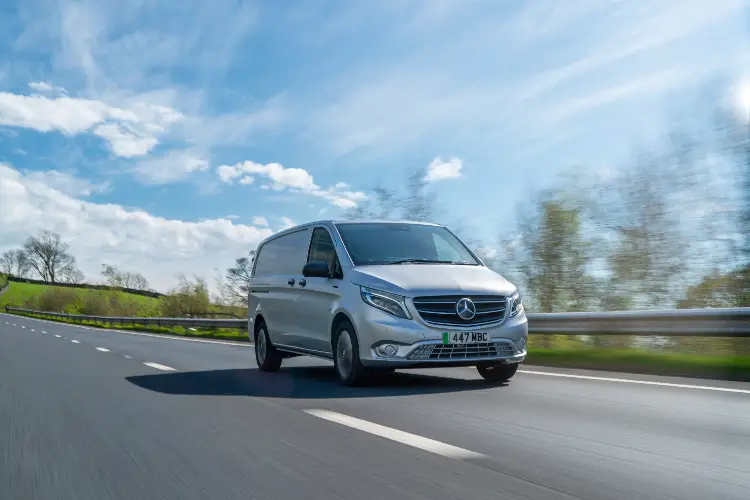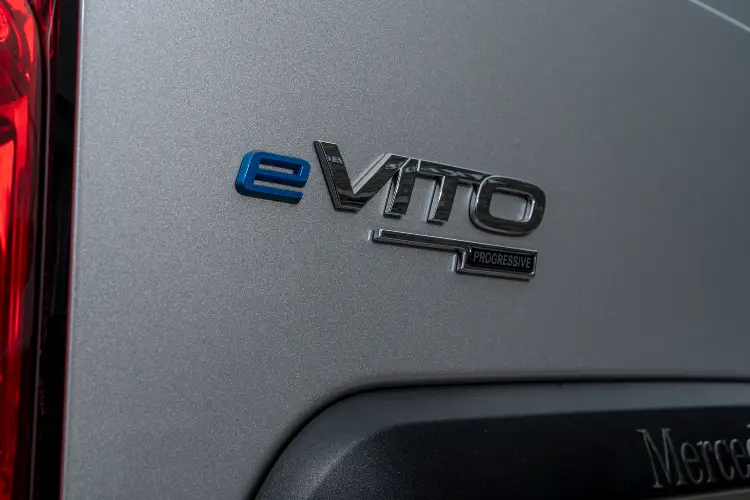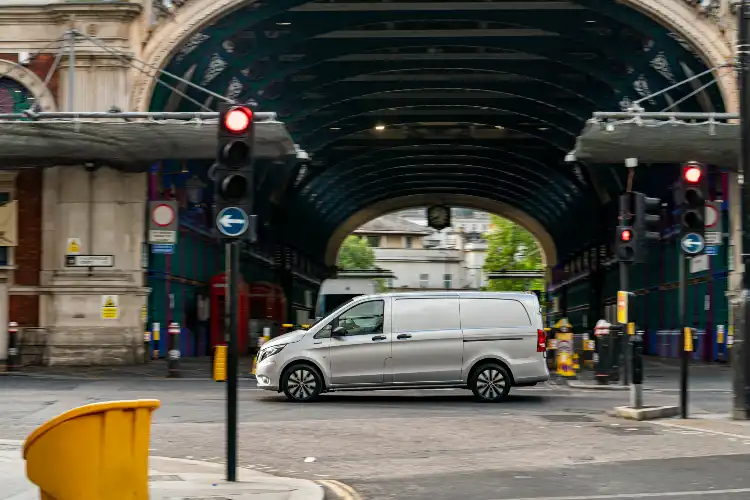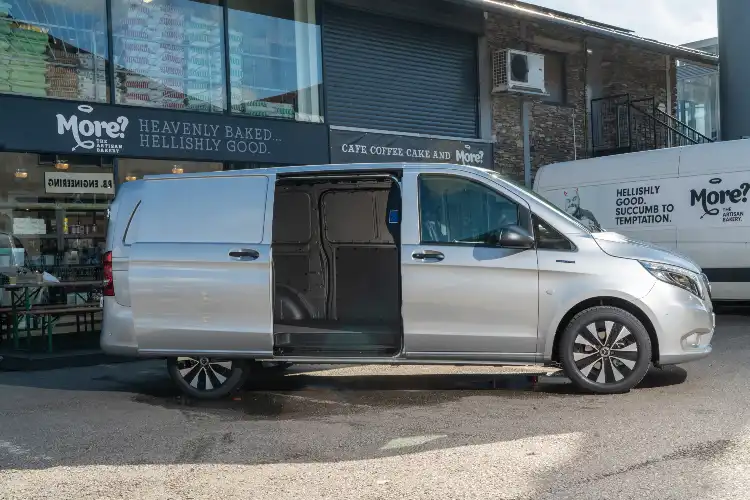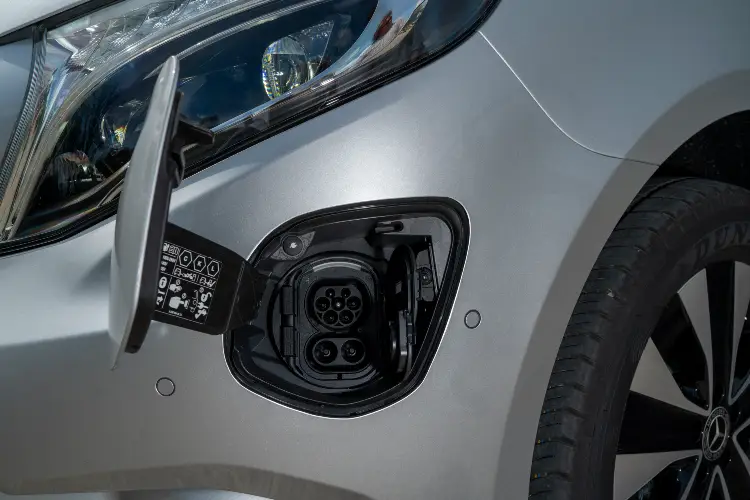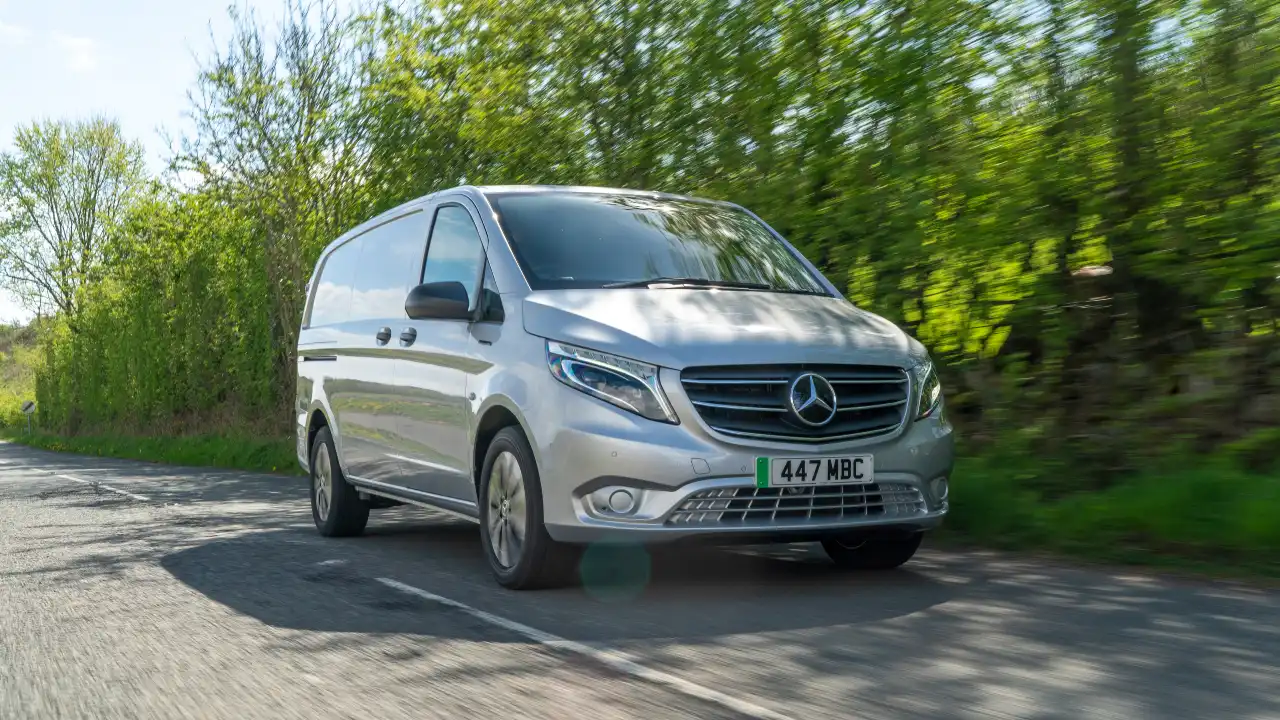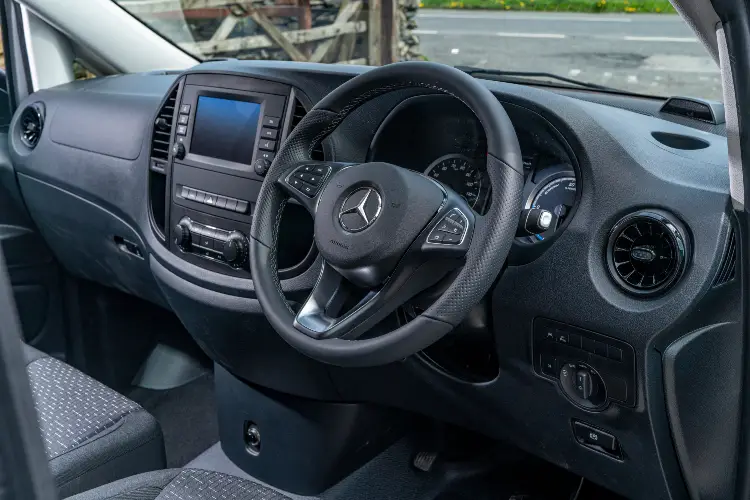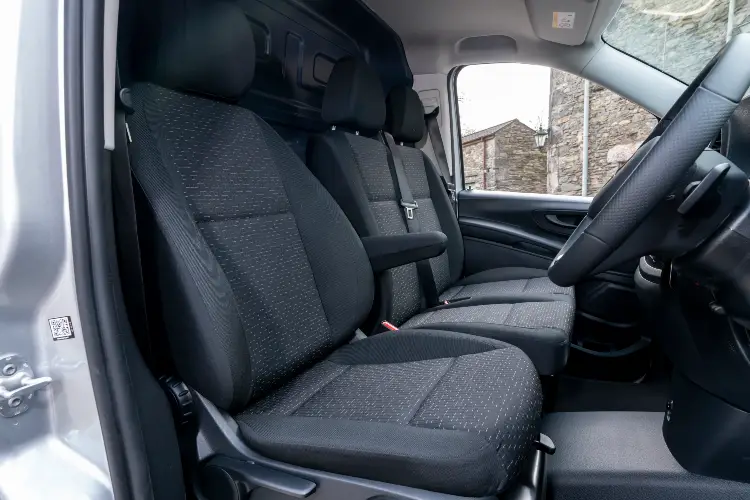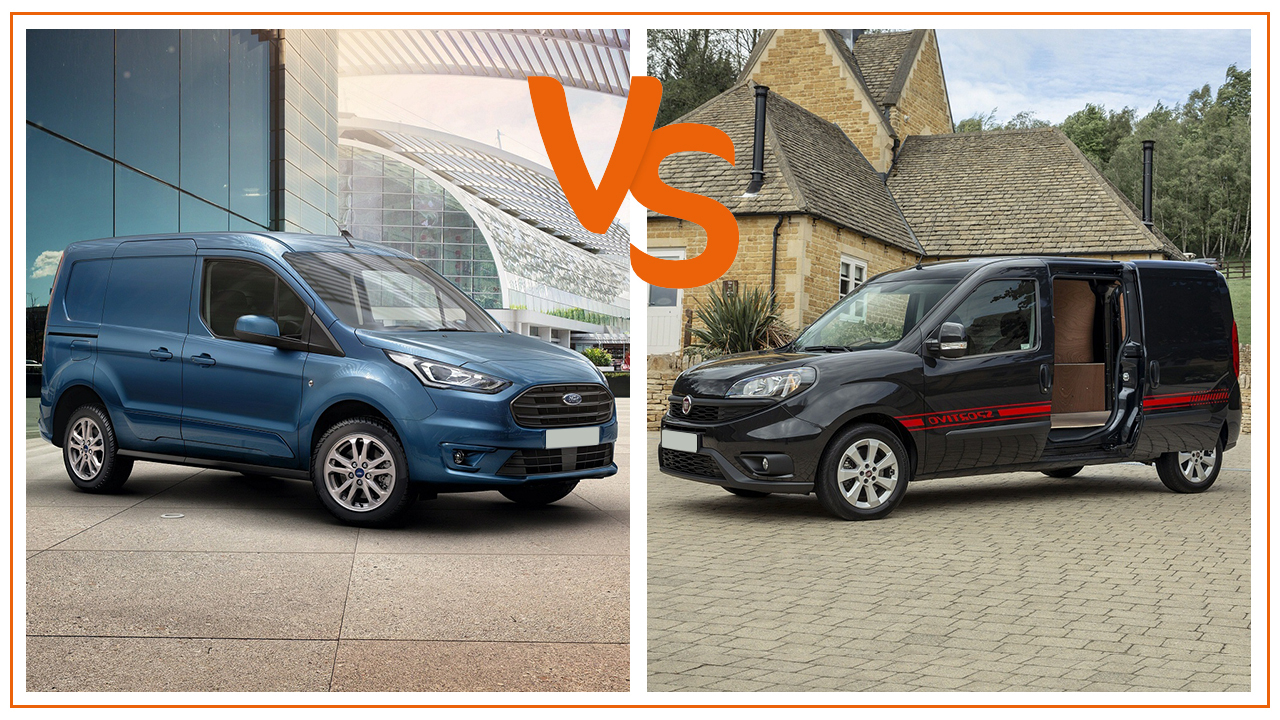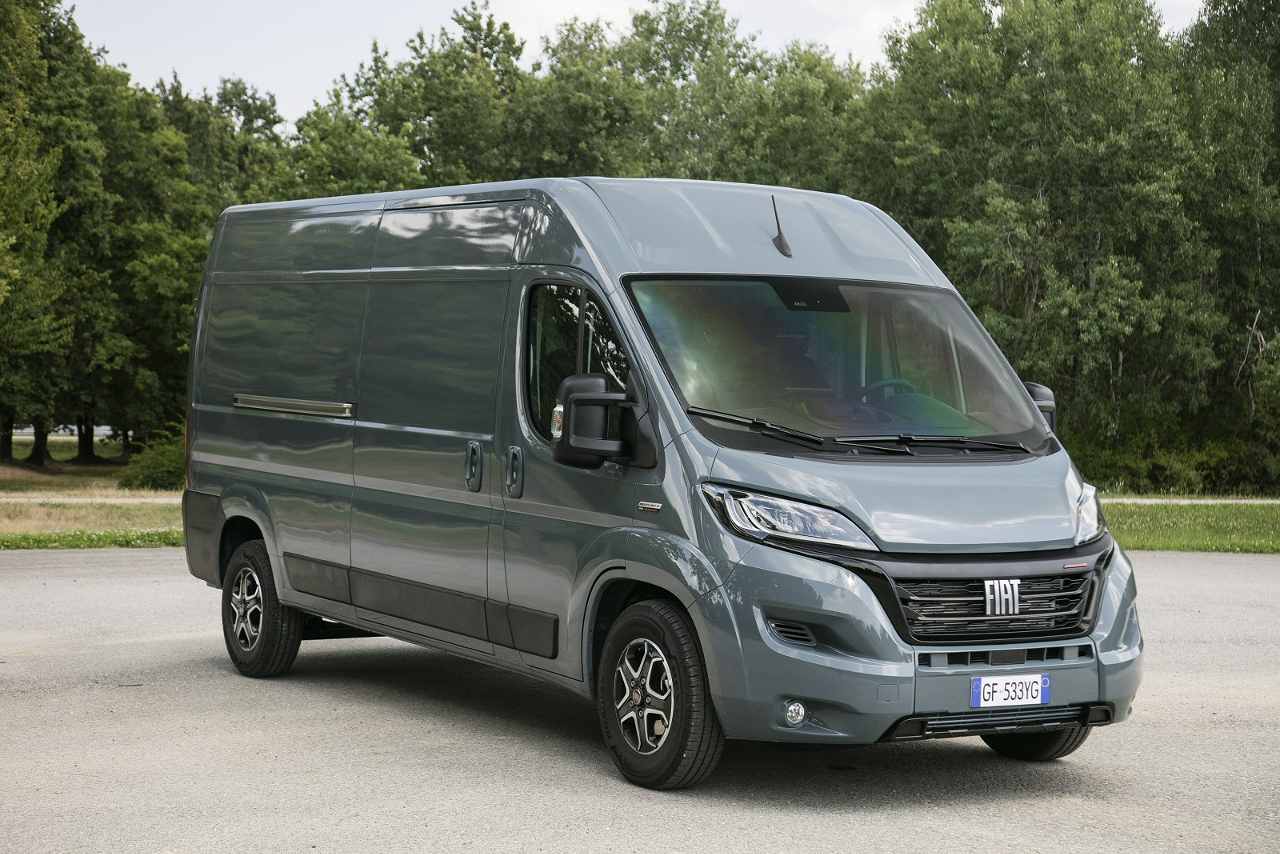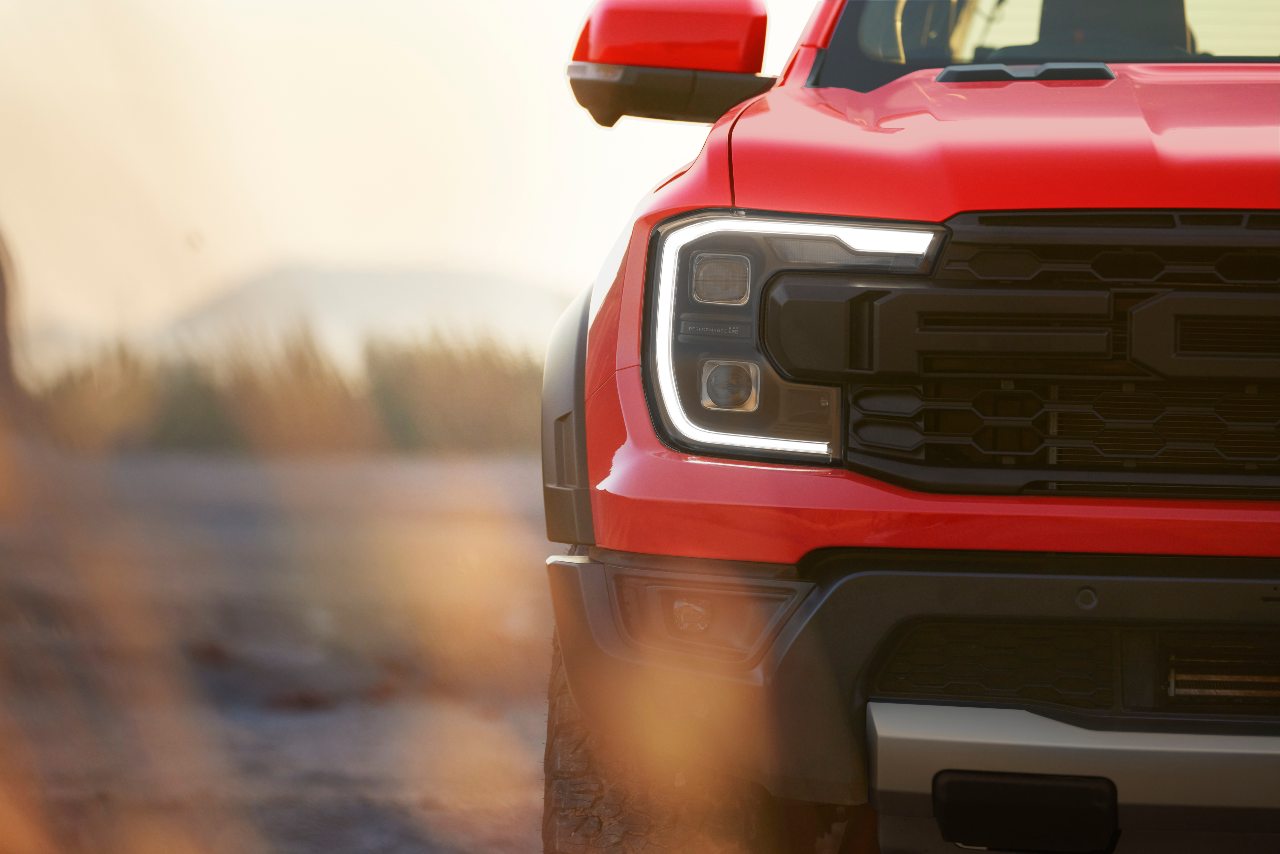By Tom Roberts
Competition in the electric medium van segment is hotting up. With Ford's recent announcement of the Transit E-Custom, almost all manufacturers now offer a battery-powered van. Mercedes-Benz was one of the pioneers with the introduction of the eVito medium-sized electric van a couple of years ago, and now, with some improvements recently announced, the company has countered some initial criticism. Vanarama Van Expert Tom Roberts takes a deep dive into the revised e-Vito to see if it’s got what it takes to keep up with the pack.
Not many people know this – Mercedes-Benz originally launched an electric version of the Vito way back in 2010. How do I know? Because I drove one. Known then as the ‘E-Cell’, the van was only available directly from the company’s in-house leasing operation, and numbers ‘sold’ were minimal - probably down to its cost and the fact that the van market wasn’t quite ready for electrification back then.
Move the clock forward and now we have the eVito in its latest guise. Much to the frustration of Mercedes-Benz, the Vito has never really troubled the likes of the Ford Transit Custom, Volkswagen Transporter or Vauxhall Vivaro in the UK sales charts, and so the company has high hopes for this updated electric van...
Why Did Mercedes-Benz Update The eVito?
By far the biggest criticism of the previous model of eVito was the maximum range at full charge. While at least 1 competitor had a van that could travel the best part of 200 miles between charges, the original eVito could only manage 93 miles - and in reality, quite a bit less. There was probably only a usable 50-60 miles available, which understandably restricted the van’s appeal to customers whose daily mileage was low and those able to plug it in every night to recharge.
Mercedes-Benz has gone a long way towards putting this right – more on this later - and there are some trim level changes too, to bring the van in line with the manufacturer's other van models.
What Body Options Are Available On The Mercedes-Benz eVito?
There’s just the 2 body lengths with the eVito, the L2 and L3 models (the Vito L1, previously known as Compact isn’t offered in battery electric guise) and a single roof height. You’ll get a load length of 2831mm in the L2 (although, sneakily, Mercedes include 370mm of space under the front seats, worth bearing in mind if you’re comparing the eVito with other vans) and the L3 has 3061mm but with the same caveat.
If volume is your bag, there’s 6.0 cubic metres of capacity in the shorter van, and 6.6cu/m in the L3. Twin rear doors are standard, as are sliding doors on both sides, very useful and something we don’t see on every van.
What Payload Carrying & Towing Capabilities Does The Mercedes-Benz eVito Have?
Having a decent payload and heavy battery packs don’t sit well together and some electric vans fare better than others. The eVito just about does OK here, with payloads between 824kg and 882kgs. More battery powered vans are now able to tow, but unfortunately this isn’t the case with the eVito which is not approved for pulling any type of trailer. Check out our van towing explainer for more information if you need the capability to tow, or head straight to our van towing comparison chart to see which models can do the best job.
What Electric Motors, Batteries, Range & Charging Times Will You Get With The Mercedes-Benz eVito?
The eVito’s motor has an output of 85kW, which is equivalent to 114hp, probably sufficient for most users but not class-leading. The new 66kWh battery pack is a huge improvement on the previous 41kWh version and is responsible for a more realistic and practical 162-mile WLTP calculated range between charges. There’s no doubt that this single change in specification makes the eVito worthy of consideration for anyone thinking of leasing a new electric medium van.
The 7kW wallbox that you might have at home will get you from 0 to 100% of capacity in just 8 hours, and if you’ve opted for the higher-output 11kW supply, this will bring the time down to around 6.5 hours. Find yourself an 80kW DC chargepoint and 10% to 80% will take just 35 minutes. If the eVito will be your first electric van lease read our article on how charging stations work for more information.
What Drive Modes Are Available On The Mercedes-Benz eVito?
To optimise the eVito’s range, Mercedes-Benz has included 5 recuperation modes on the van, all designed to harness the power generated by the motor when the van is decelerating. The drag that this effect causes has 2 major benefits.
-
It can recharge the battery pack, thereby extending the range
-
It reduces the need to apply the vehicle brakes.
The different modes available on the eVito mostly offer increased or reduced recuperation effects. Opt for the ‘D’ mode, and the braking effect is so strong the vehicle's brake lights will be illuminated when lifting off the accelerator pedal.
There’s also a new set of settings called ‘Dynamic Select’, which allows you to choose between ‘comfort’, ‘efficiency’, and ‘efficiency plus’ modes. The manufacturer says that these options apply ‘strategies’ (or balance) for heating, ventilation, how the drivetrain is used and limiting other things that might draw excessing electric power from the batteries. Simply put: the higher the efficiency setting you choose, the more things will be turned off and the more range is available from the battery pack.
What Standard Equipment Is Available With The Mercedes-Benz eVito?
There are just 2 trim levels to choose from, compared to 3 with the diesel Vito, but Mercedes-Benz has been very generous, particularly with safety tech. All eVitos come with Active Brake Assist, Attention Assist, Crosswind Assist and an Acoustic Presence Indicator, making an audible sound at speeds below 19mph to alert pedestrians of its presence.
The ‘Progressive’ trim model comes with a DAB radio and the all-important Apple Carplay/Android Auto smartphone integration, which is becoming a must-have for many van operators. There’s air conditioning, cruise control, a reverse camera and even a heated drivers seat, and a Thatcham alarm is also fitted as standard.
The eVito ‘Premium’ trim model adds some nice touches to the exterior, with 17-inch alloy wheels, metallic paint, painted bumpers and a chrome grille. In the cab, not too many changes, but you do get a leather steering wheel, front and rear parking sensors and electrically-folding door mirrors.
What Is The Mercedes-Benz eVito’s Cabin Like?
If you’re familiar with any other Mercedes-Benz vans - be it a Sprinter or Citan - the cabin will be very familiar. The dash is a little ‘marmite’ - you’ll either love or hate the almost flat, imposing centre section - but the no-frills instrument panel is now starting to look a little dated compared to the latest digital products being offered by some of the competition. However, it is ‘function over fluff’, so it will appeal to some for its durability.
What Connectivity Does The Mercedes-Benz eVito Offer Drivers?
Most new vans these days come with an integrated SIM card, with varying features being available. eVito is no exception - the integrated module can make an automated emergency call in the event of an accident, together with GPS-generated location information so any recovery service can find you easily.
What Warranties & Servicing Schedules Are Available With The Mercedes-Benz eVito?
A 3 year/100,000 mile warranty is standard with all eVito vans, and the battery pack is guaranteed for 8 years or 160,000kms (whichever comes first). You’ll need to have the van serviced annually to stick to the manufacturer’s recommendations (and to keep the warranty intact).
Tom’s Takeaways
In its diesel form, it’s perhaps a bit of a mystery as to why the Vito isn’t hugely popular here in the UK. It’s not ugly, it can carry a decent load and the equipment level is solid. The van did previously have an awful reputation for rusting quickly, but this problem was overcome a long time ago, so it’s unfair to level that criticism at it these days.
I reckon the biggest issue Mercedes-Benz has is that, to many, the van feels like it has been derived from a large people carrier and marketed as a van as an afterthought - rather than being designed from the ground up as a commercial vehicle. This is partially true - think of the Viano (formerly known as the V-Class) which has proved successful as a high-spec MPV, competing with the Ford Transit Custom Tourneo and which is essentially a Vito with seats and windows.
There’s really nothing wrong with the eVito, especially since the arrival of the larger battery pack. Range will be practical for the majority of users, the payloads are good, the equipment level is excellent (personally I think the Progressive model is the best value for money) and Mercedes-Benz’ after-sales support is up there with the best. All we need to do now is get UK van operators to sit in one of these machines and I reckon they’ll go for one.
If you’re looking to lease a new Mercedes-Benz eVito, check out our best leasing deals on the eVito range page.

